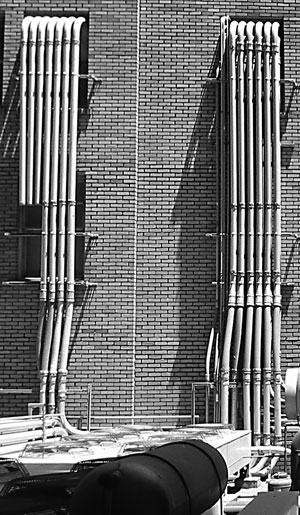Ether 11 Immaterial Culture

Because space in One Wilshire is at such a premium, companies run conduit to adjacent structures. Over a dozen nearby buildings have been converted to such telcom hotels, providing space to telephone and Internet companies seeking locations near the fountain of data at One Wilshire. This centralization of information defies predictions that the Internet and new technologies will undo cities. Nor, however, does it lead to a revival of downtown in classical terms. The buildings are valuable again, but largely uninhabited. Still, if one of the reasons for the downfall of the American downtown is the slowdown in transportation and wear on infrastructure created by congestion, the emptiness of the streets in Los Angeles’s telecom district ensures that this will never be a problem.
One Wilshire stands as a continuous demonstration of the phases of the metropolis and the current state of the postmetropolitan world. One Wilshire demonstrates that the new functions of the city do not need a shape of their own but rather are repelled by that possibility. The transformation that One Wilshire undergoes from its construction in 1966 to its transformation in 1992 parallels the transition from material reality to virtual reality during the Cold War. With the full development of the postmetropolitan realm and the corresponding global saturation of material production, we enter the world of immaterial culture. One Wilshire demonstrates the transformation of the city into a system of objects and the importance of the network in that system.